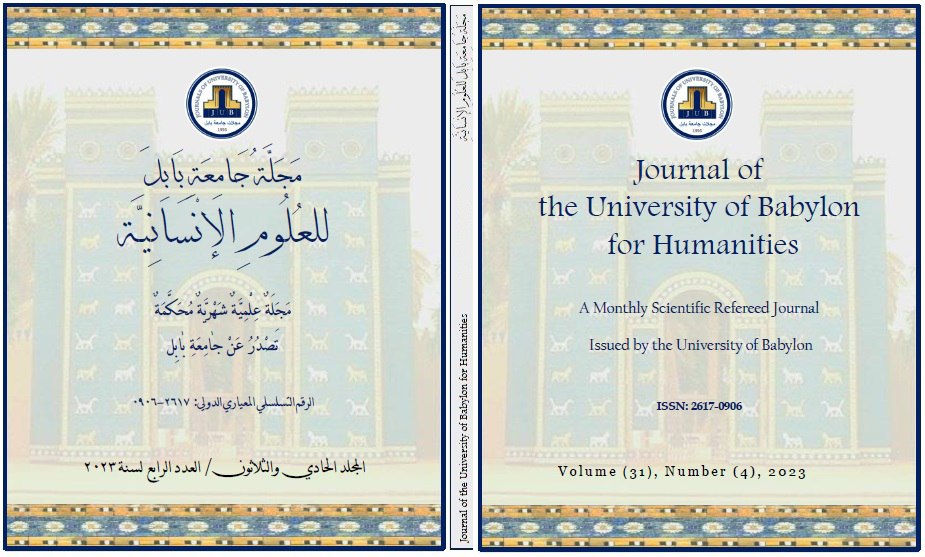Coloring Problematicity in the Sculptures of Ancient Civilizations
Main Article Content
Abstract
The research is concerned with a subject study (the problem of coloring in the sculptures of ancient civilizations). It is long, but the method of coloring it and the choice of colors is what dazzled the eyes and robbed the minds, and some of it is artificial and some is natural, i.e. existing in living nature originally without change or mixing depending on the original raw material of the dye extracted from nature, and the problem ended with the following question?), its importance and the need for a mechanism to shed light on colored sculptures in which coloring is considered as a way of expressing thought or belief in those eras. Learn about primitive methods, ideas and techniques. The aim of the research was to identify the problem of coloring in the sculptures of ancient civilizations. The research represented the temporal boundaries (2800-530 BC). This period included three civilizations starting from the beginning of the Sumerian revival and ending with the Persian occupation of the three civilizations. And the definition of terms that included the problematic language، idiomatically and procedurally, coloring in language, idiomatically and procedurally, and sculpture Language, terminology and procedural The second chapter included three consecutive topics. The first topic is the concept of coloring and its intellectual dimensions. The second topic includes the problem of coloring and the diversity of its patterns and methods. The third topic is art in ancient civilizations. In the third chapter, the procedures came after the researcher touched on the indicators, the theoretical framework, the selection of the sample, and the analysis of the colored sculptural works. The researcher chose 6 samples that serve the directions of the current research, and then the fourth chapter. Results: The coloring indicates a religious and worldly significance according to the belief of each civilization. Color is considered one of the most important elements of plastic formulations, as it represents the definition of the body and space of the artwork. Conclusions: The ancient Iraqi sculptor relied on sacred symbols. The Sumerians revered it as a bull and a lion. And the Egyptian sculptor relied on realism and symbolism. Recommendations: Making ancient sculptural models in imitation of the ancient civilizations of Iraq, Egypt and Greece, and distributing them to schools to communicate the idea and culture and increase knowledge of their ancient civilization.

